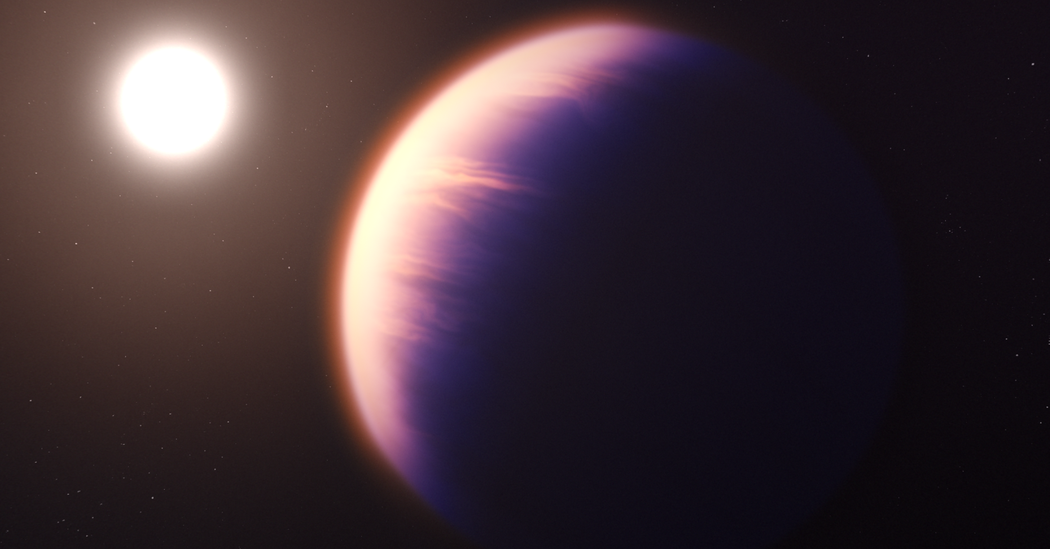Webb Telescope Sees a Carbon Dioxide Atmosphere Way Out There

The James Webb Space Telescope is having a fantastic rookie season.
On Thursday a team of astrophysicists using the new telescope to probe exoplanets added to what has been a cavalcade of discoveries when they announced that they had detected carbon dioxide in the atmosphere of an exoplanet for the first time.
The planet, known as WASP-39b, is a puffy and very hot gas giant, about the mass of Saturn. It orbits a sunlike star 700 light-years from here, at only one-eighth the distance between Pluto and our sun — way too hot for any life as we know it. As a result, from our point of view, the planet appears to zip in front of its star every four days.
The planet was discovered in 2011 by an international consortium called Wide Angle Search for Planets using a network of robotic telescopes. The name Bocaprins, a reference to Boca Prins Beach in Aruba, was bestowed on it by the International Astronomical Union in 2019.
During the transits, as they are called, of WASP-39b, light from its home star is filtered through the planet’s atmosphere and absorbed at the characteristic infrared wavelengths of the atoms and molecules in the atmosphere.
Water vapor was previously detected on WASP-39b, but carbon dioxide is a more sensitive indicator of the planet’s composition history and where it formed in the primordial protoplanetary disk, said Natalie Batalha, of the University of California, Santa Cruz, and the leader of the team. “Carbon and oxygen are among the most abundant heavy elements in the universe,” Dr. Batalha wrote in an email. “Carbon dioxide is ubiquitous in the atmospheres of solar system planets.”
She added: “For this first result, a major takeaway also has to do with instrument performance. This was an ‘aha’ moment where I thought, wow, this is going to work.”
The work has been accepted for publication in the journal Nature.
“Detecting such a clear signal of carbon dioxide on WASP-39b bodes well for the detection of atmospheres on smaller, terrestrial-size planets,” Dr. Batalha said.
